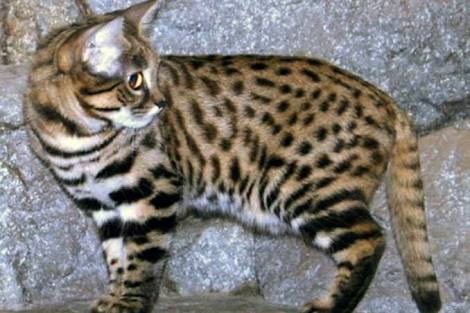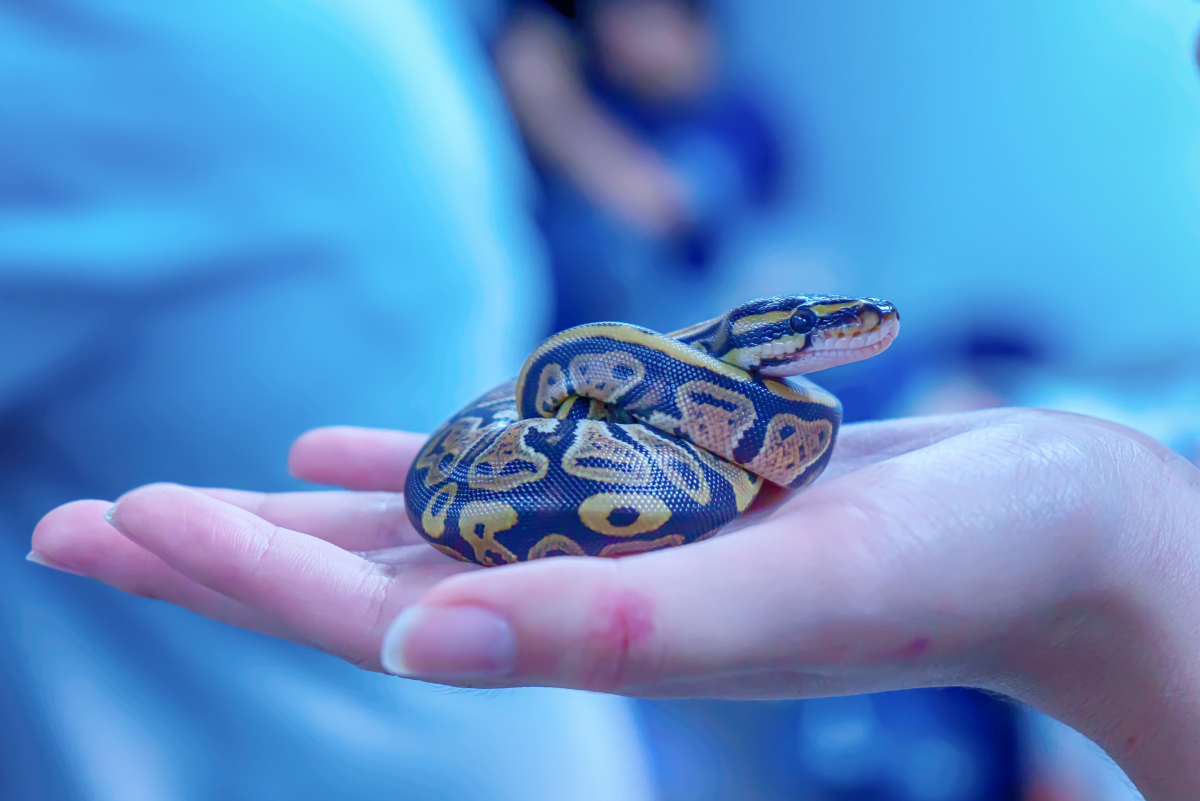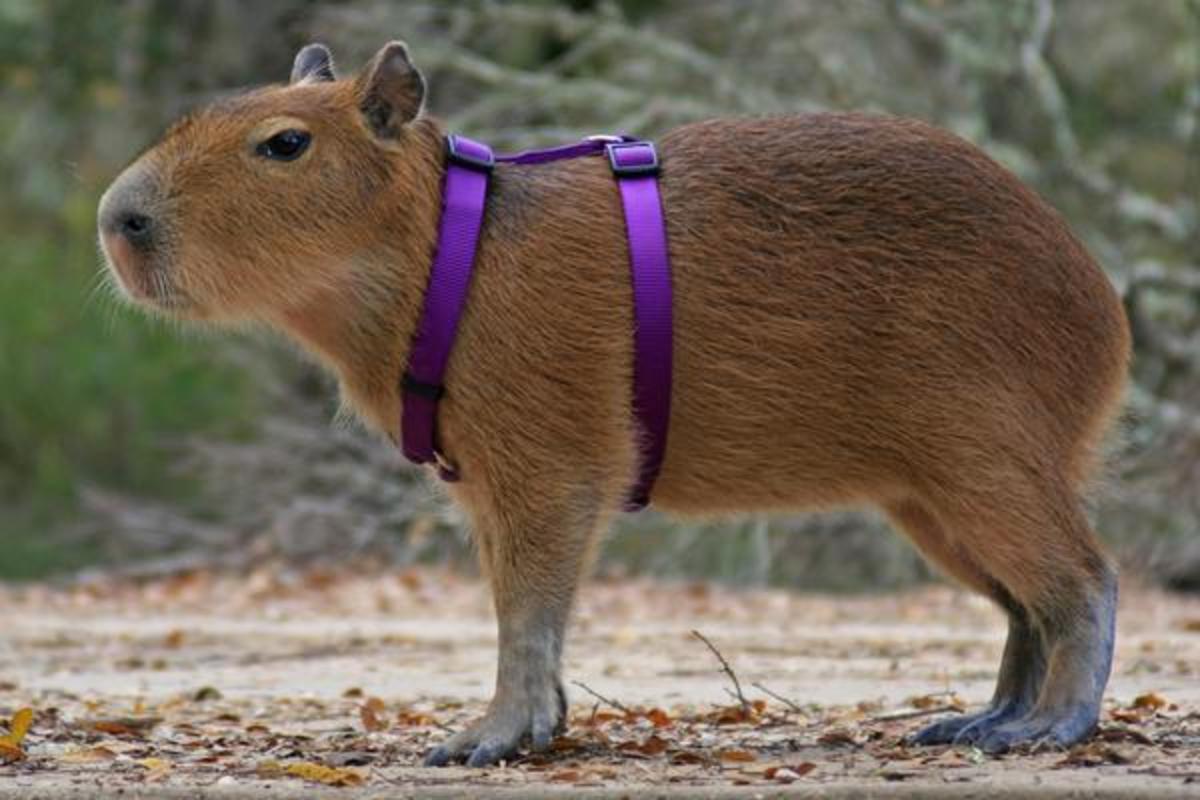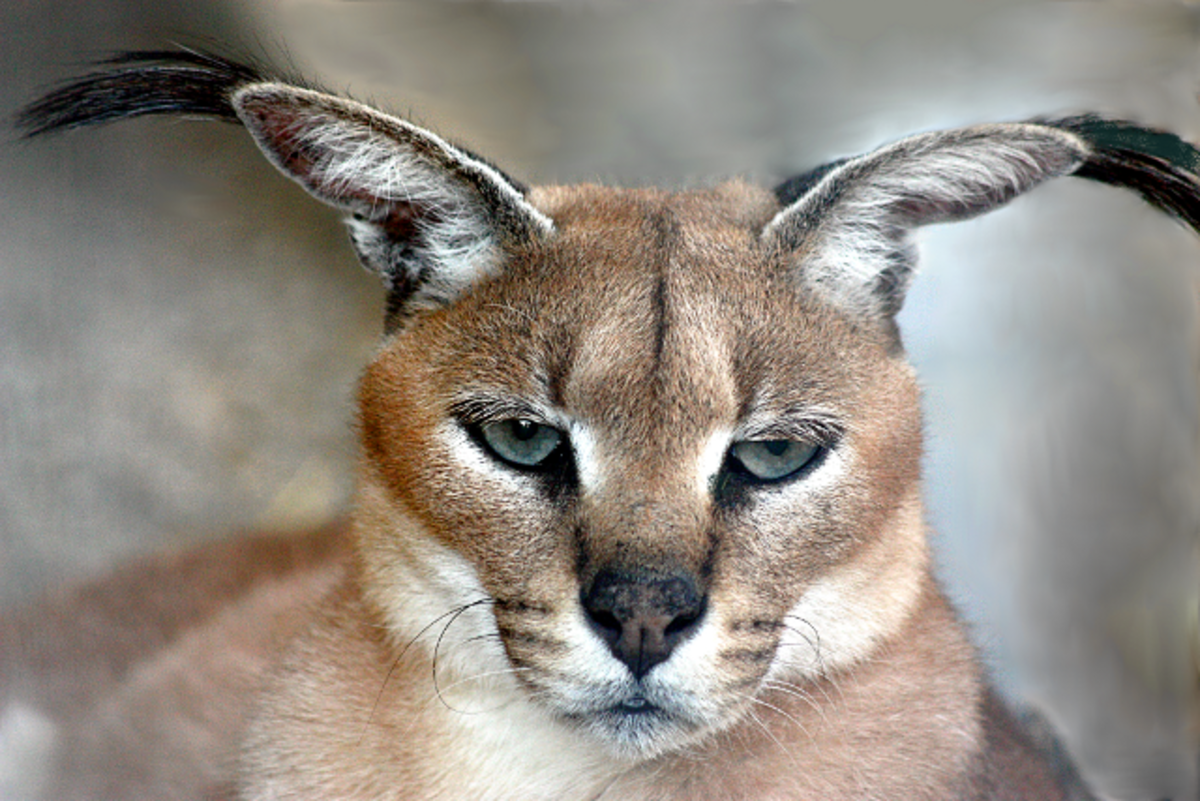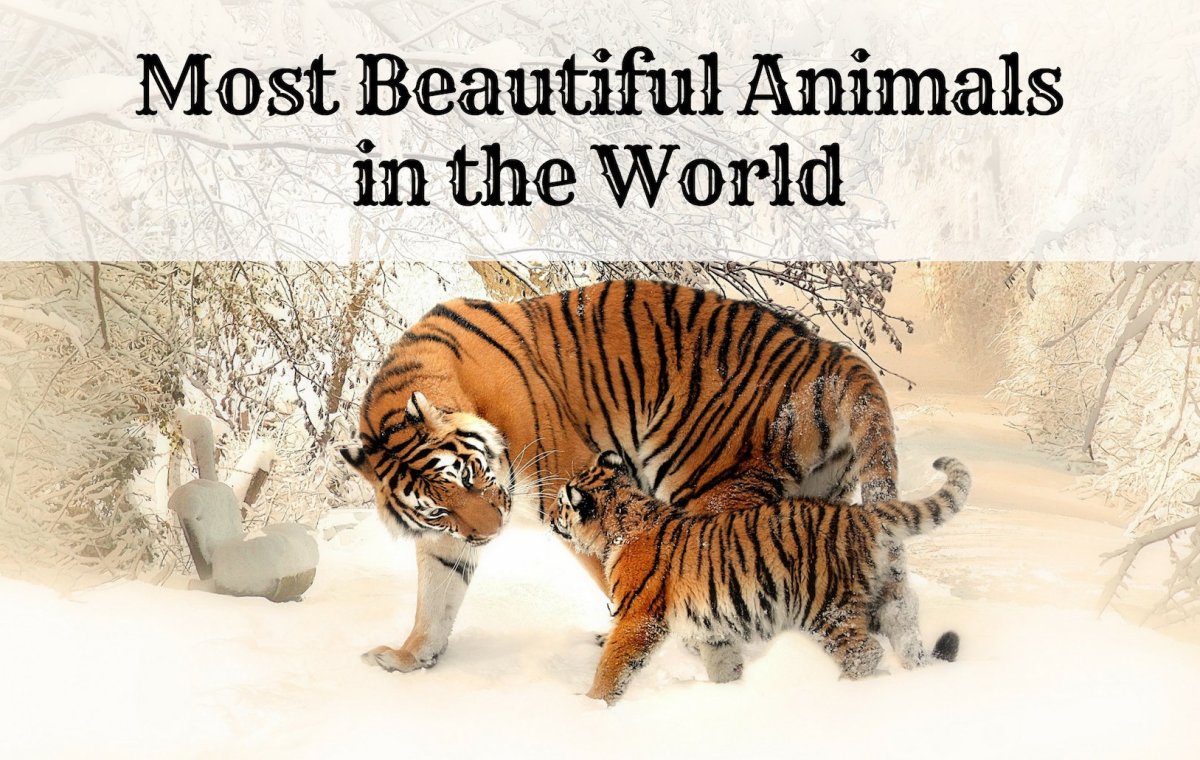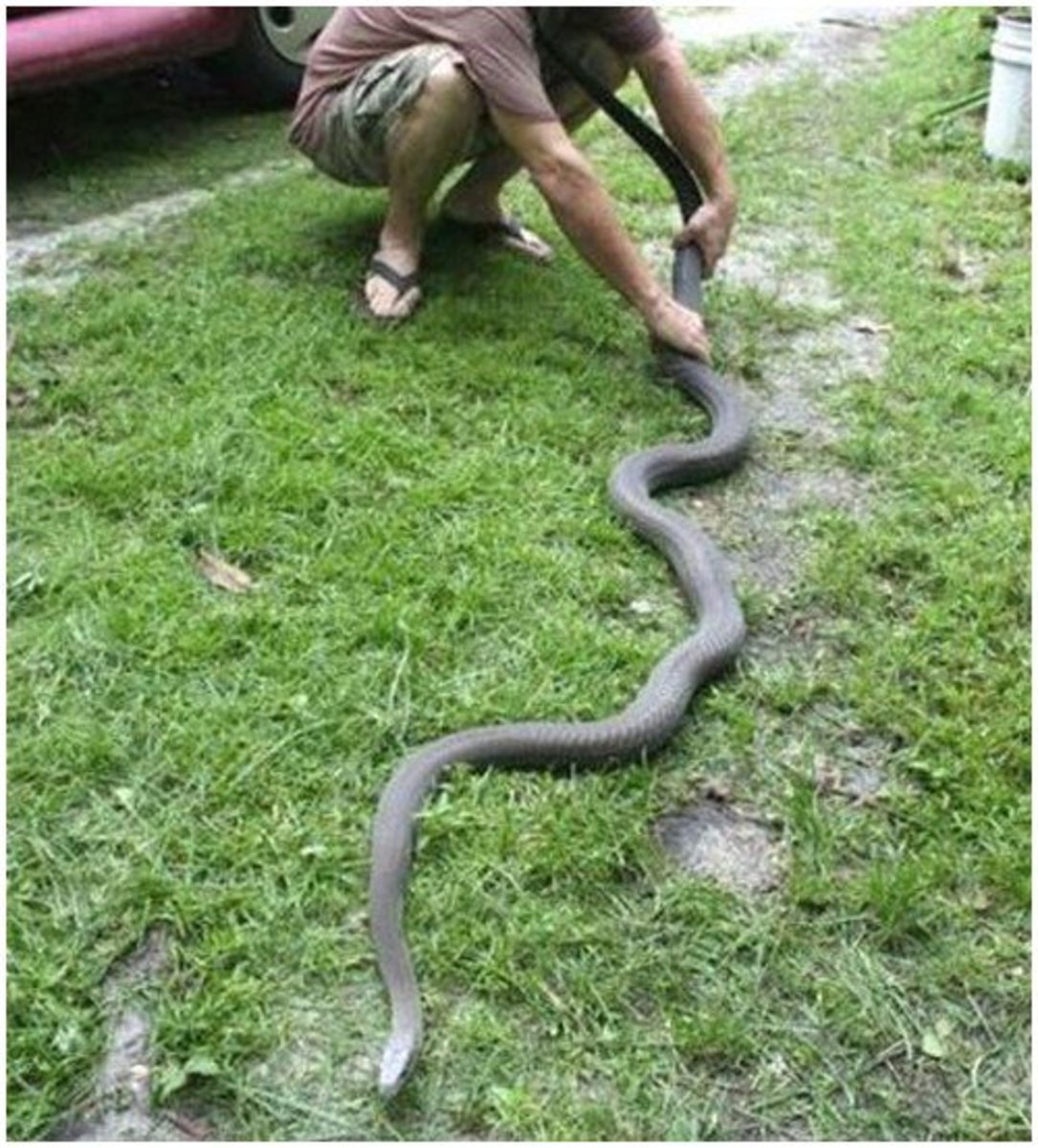South Africa's Small Wildcat Species
It is often said that big things come in small packages, but it may never be more true than with South Africa's smallest wildcat species. Words like tenacity, power, speed, confident, swagger, and feisty come to mind, describing them perfectly.
These are the lesser known, hardly seen cat species that are not only in desperate need of public attention due to their threatened status in the wild, but they also form essential links in our ecosystems. With a scarcity of information it is difficult to obtain funding for conservation projects, provide protection for them, or establish conservation standards.
The small cat species under the spotlight are endemic to Africa and considered true to South Africa. They are Caracals, Servals, African wildcats, and the Black footed cat.
Their larger cousins, in particular the lion, cheetah, and leopard, do receive much more focus and attention through tourism and the fact that they are more easily sighted than their smaller cousins. However, they are all threatened by the loss of valuable habitat and prey, indiscriminate killing, as well as conflict with humans, livestock and domestic animals.
Thumbs up to initiatives by organizations, such as the Cat Conservation Trust, who are doing so much in promoting awareness through education and research.
CARACAL
Caracal caracal, formerly known as felis caracal.
The name Karakulak, is Turkish for 'back eared'. On African soil it is described by the Swahili language as 'Simbamangu'. Simba is Swahili for lion, and mangu means 'secretive', and the African nomads call them 'Gazelle cats'.
In Afrikaans the name is 'rooikat', translated as 'red cat', probably because the caracal is the reddest of all cats on the African continent, and possibly in the globe.
The short face with its powerful jaw has prominent black and white markings around the eyes and mouth, and white under the chin. Distinctive dark tufts on its large ears are very characteristic, and interestingly, are used for communication.
It is one of a very few cat species with hardly any stripes or spots on the coat. Colour varies from yellowish brown, reddish brown, to grey. In rare instances melanistic (black) specimens have been found.
Caracals are capable of arial jumps and leaps. Legend has it that many years ago, caracals were put into arenas containing flocks of pigeons, and wagers were made as to how many pigeons the cats would take down. This is where the saying "Letting the cat among the pigeons" originated from.
Weighing in at about twenty kilograms, the Caracal is the heaviest and largest of South Africa's small cats. It's also the most powerful of the African small cats. The hindquarters are slightly higher than its shoulders, as the hind legs are longer than the front legs, allowing the cat to perform considerable aerobatics.
The caracal is occurs throughout South Africa, but is absent from the eastern and western coastal strips. Arid bushveld and grasslands are preferred, and habitats with dense vegetation for cover, essential. Sometimes they do venture into mountains and rocky hills in search of hyraxes and mountain rheedbuck. Other prey items include guinea fowls, pigeons, hares, rodents, as well as small to medium sized antelopes. However, caracals have been recorded catching impalas, young kudus (even more than double its own size and weght), vervet monkeys, and even ostriches as they were sitting down resting. Where large species of antelope are killed, the caracal would cover the remains of the prey with grass and leaves until the next feeding.
Hunting takes place at night and during early morning hours. They employ the same method to kill prey the bigger cat species use - suffocation by a bite to the wind pipe. It's power, agility and speed makes the caracal a formidable hunter.
Their ability to leap and jump is remarkable, and heights of three meters are achieved as birds are flushed out, grabbed and dragged into cover.
Unlike the serval, caracals are not water dependant.
This is a solitary specie but when its mating season, males roam into females' home ranges for obvious reasons. Females prepare dens and line it with feathers, hair and fur. After gestation of eleven weeks, one to four kittens are born during the cold months of July and August. Newborn have folded ears which 'open up' / straighten out after about thirty days. The mother changes location regularly to make it difficult for predators to trace them. They start eating solids by six weeks, and get weaned between at four to six months when they are old enough to hunt on their own. Kittens remain in the company of the female for about twelve months, and the females reach sexual maturity by eighteen months, and longevity is12 years.
As previously mentioned, caracals are solitary cats, but when two indivduals do meet, they move their heads from side to side (called head flagging). This behaviour is quite unlike what the servals do - by moving their heads up and down as seen in the description below.
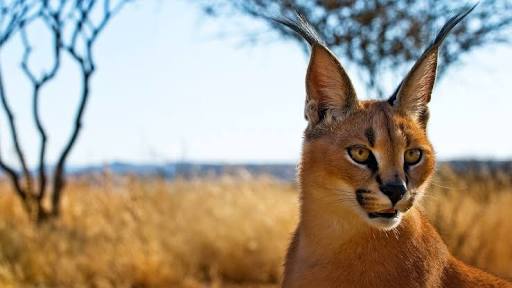
SERVAL Leptailurus serval, formally classified as felis serval.The name Serval is derived from the Greek 'laptaleos' meaning fine or delicate, and 'aiolos' meaning quick moving.In the Portugese language, Serval is derived from a word meaning 'deer - like - wolf, and from 'Servus' meaning deer. Even the French refers to 'the wolf that hunts the stag'. The Africa the name 'Bush cat', and in Afrikaans, 'Tierboskat' is pretty descriptive of the specie - (tier = tiger, bos = bush, and kat = cat).
The serval is the tallest of Africa's small cats, with long lean legs, small head and pointed face. Large rounded ears set close together and distinctly black colouration at the back, with a white patch accross the centre of each ear, and with black tips. Very similar to the caracal in size, but sevals are more slender and slightly taller. The coat pattern varies, but generally a pale yellowish colour, covered with a combination of dark spots and stripes down the neck and back areas.
Adults weigh between 11 and 13 kilograms, and their longevity in the wild is 11 years.
They are specialist at catching rodents, especially grass rats and mole rats, as well as birds up to the size of storks and flamingoes, and are quite capable of taking down the young of small to medium sized antelopes. When hunting they rely on acute hearing to locate prey, even rodents living underground. When rodents are caught, they are repeatedly stunned by blows from the front paws before they're killed and eaten. Other prey items include insects and reptiles.
Servals prefer long grass savanna regions which are welll watered. They avoid true deserts and typical rainforests. Servals are solitary animals, highly territorial and interaction with other members of the specie is limited to short periods. Traits of aggression are shown in two distinctive ways. The head is moved up and down instead of sideways, like other cats do. When two rival males meet they typically stand facing each other with backs arched, tails raised over the backs, heads moving up and down, and displaying teeth whilst yowling. The aggressor sometimes straightens one foreleg and raises it, prodding the opponent. Both sexes mark their territories by spraying, and rubbing their faces on grass stems as well as other marking spots.
When breeding, pairs can be seen travelling and/or resting together. Gestation period ranges between ten and eleven weeks. In general, two to three kittens are born, one month before peak period of prey density occurs. The young should start eating solid foods by the age of three weeks, and by eight months the female would typically chase them out of her homerange. That's the age when they can start hunting on their own. Sexual maturity is reached between 18 and 24 months. Females normally raise two litters per annum.
Servals are predominantly crepuscular, (those animals that are active primarily during twilight, the period immediately after dawn and that immediately before dusk) and are most active early in the mornings. They are also less active at times when large predators are on the prowl. During the heat of the day they spend their time resting and grooming in cool shaded spots or in burroughs dug by other animals.
They are extremely agile cats and have the ability to change direction and swerve at full speed, and are exellent tree climbers. Like caracals, servals use vertical leaps to catch birds and insects in the air. Servals have a characteristic pouncing technique when hunting rodents. It leaps high into the air and then lands on the prey with its forepaws. Catching birds in flight happens in a flash, as servals can leap vertically into the air for two to three meters.
The cats are being predated upon by spotted hyenas, leopards, wild dogs and humans, and the skin is sought after in the pelt trade, as is the rest of the body parts within the African mooty trade. Some of the African tribes consider their meat as a delicacy.
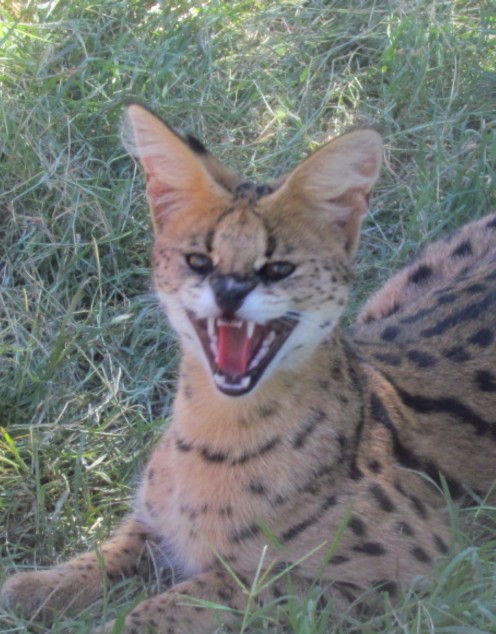
AFRICAN WILDCAT
Felis silvestris lybica (VAALBOSKAT in Afrikaans)
Recent genetic data suggests the African Wildcat should be divided into two species, with the Southern African Wildcat Felis silvestris cafra occurring south of the Sahara desert.
Felis - Genus of small and medium sized members of cat species endemic to most of Africa; Sylves - terms like wild, forest and woodland came out of the translations. Remains of domesticated African Wildcats have been found dating back to almost 10,000 years ago.
Similar in size and appearance of domestic cats, but have slightly longer legs. The colour variations are due to the diverse habitats they live in. Coats are short, soft, and generally greyish brown with faint vertical stripes on the body, with a much lighter chest area, and dark markings on the legs and on the black tipped tail.
Distinctive markings include-
rufous colouring on the back of the ears
pinkish nose
white markings around eyes and mouth, and
dark stripes on legs.
Weight varies from 3 to 6.5 kg. They feed on small mammals (up to their own size), birds, their eggs, reptiles, amphibians, and large insects. Their largest prey animals include the African hares and springhares.
The African Wild Cat is generally solitary except when mating, or when the female is raising kittens. Both males and females establish territories which they mark and defend.
When confronted, the African wildcat raises its hair to make itself seem larger in order to intimidate its opponent. In the daytime it usually hides in the bushes, although it is sometimes active on dark, cloudy days. The territory of a male overlaps with that of up to three females.
African wildcat often rests and gives birth in burrows or hollows in the ground. The gestation period lasts between 56 and 69 days. The kittens are born blind and need the full care of the mother. They stay with their mother for five to six months and are fertile / sexually mature by age six months, and ife expectancy is from 12 to 15 years.
African wild cats, especially the young, are preyed upon by larger predators such as foxes, other cats, and large birds of prey, such as owls, eagles and hawks. These cats are fierce when threatened and can protect themselves from animals larger than themselves. The biggest threat are the domestic cats and ferals. Hybridization is widespread, and there may be very few genetically pure populations of African wildcats remaining. Feral cats compete with them for prey and space, and there is also a high potential for disease transmission. Wildcats are also killed as pests in southern Africa. These cats can do well in human altered cultivated landscapes which increase rodent densities, although these are the areas where hybridization with domestic cats occurs and spreads.
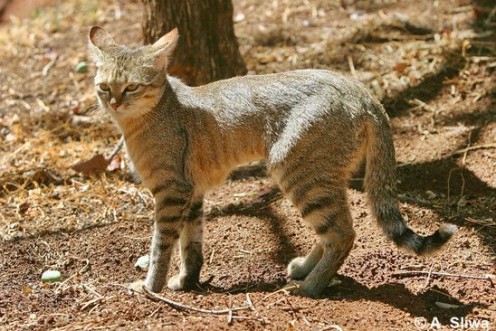
BLACK FOOTED CAT
filis nigripes
The generic name Felis means "cat" in Latin, for it comes from the Latin feles.
Latin, feles (cat) + niger (black) + pes (foot). Only the pads and underparts of the paws are black. Other names include Small-spotted cat, from the spots on the coat, and Anthill tiger, as it often makes its den in an abandoned termite mound, which is why the Afrikaans name is 'Miershoop tier'.
This is the smallest African cat, and the second smallest in the world. Adult males weigh on average 1.9 kg and a maximum of 2.45 kg. Females weigh slightly less. Shoulder height is about 25 cm.
The cat has a stocky build with round black ears, large eyes, and black-tipped tail. Its coat is patterned with black or brown spots that merge to form rings on the legs, neck, and tail. These markings are not uniform which helps with identification of individual cats. Dark bands stretch from thr corners of the amber coloured eyes, and stretch accross the cheeks.
The cryptic colouration helps the cats with camouflage. Long black hair under the paws between the pads help them hunt quietly, and protect the paws from the warm turf they walk on.
Reproduction happens mainly during warmer months. Males, even in captivity, prefer mating with their own specie. (Hybrids produced in captivity have not been successfully back - crossed). Gestation period of between 63 and 68 days are slightly longer in relation to those of other cat species, and consequently the kittens are relatively more developed, and more mature, coordination and movement is more advanced. Litters consist of up to four kittens, and there's usually two litters per year. The mother changes dens every 7 to 10 days to avoid attracting predators.
The young starts eating solids after five weeks, and are able to capture rodents by six weeks of age. The mother typically brings dead prey to the kittens until they five weeks old. Thereafter she brings live prey, release it, and sit back and watch the kittens do the job. If the prey attempts to escape, she gently drives it back to the litter. The young never experience a kill before they actually do it first hand. After the first six weeks of rapid growth, the process slows down considerably.
These cats are not dependent on water and obtains moisture from the the food they consume. However, they do drink water when available. Repeated digging suggest that they hunt for insects and other subterranean prey items. They readily scavange on prey caught by other predators, but rodents remain their favourite. A single cat can consume up to 3000 rodents per annum. In addition to rodents, birds, reptiles and amphibians are also on the menu. These feisty little cats can stand their ground against bigger animals and predators such as the black backed jackall. Pound for pound, these cats are unequalled.
During the heat of the day the black footed cat takes shelter in burrows, hollows in wood, and abandoned termite mounds. They are not only good climbers, but are also good jumpers, reaching heights of up to two meters. Their lifespan is a mere 8 years.
There are a few threats to the survival of the specie. Anything that reduces their 'pool of prey', bigger and stronger predators, and also poison applied for locust swarms, for example, are detremental. One of the benefits of these cat species are that they keep rodent numbers in control, and this means more food available, which means a bigger diversity of species.
